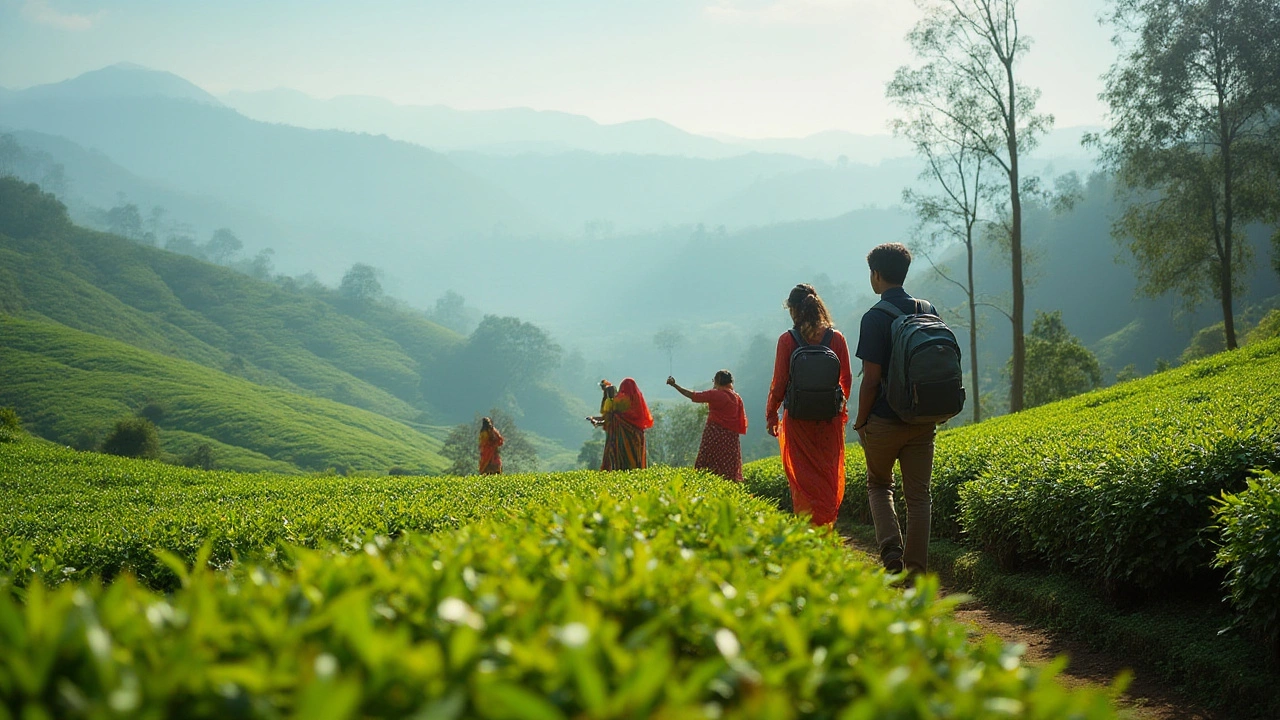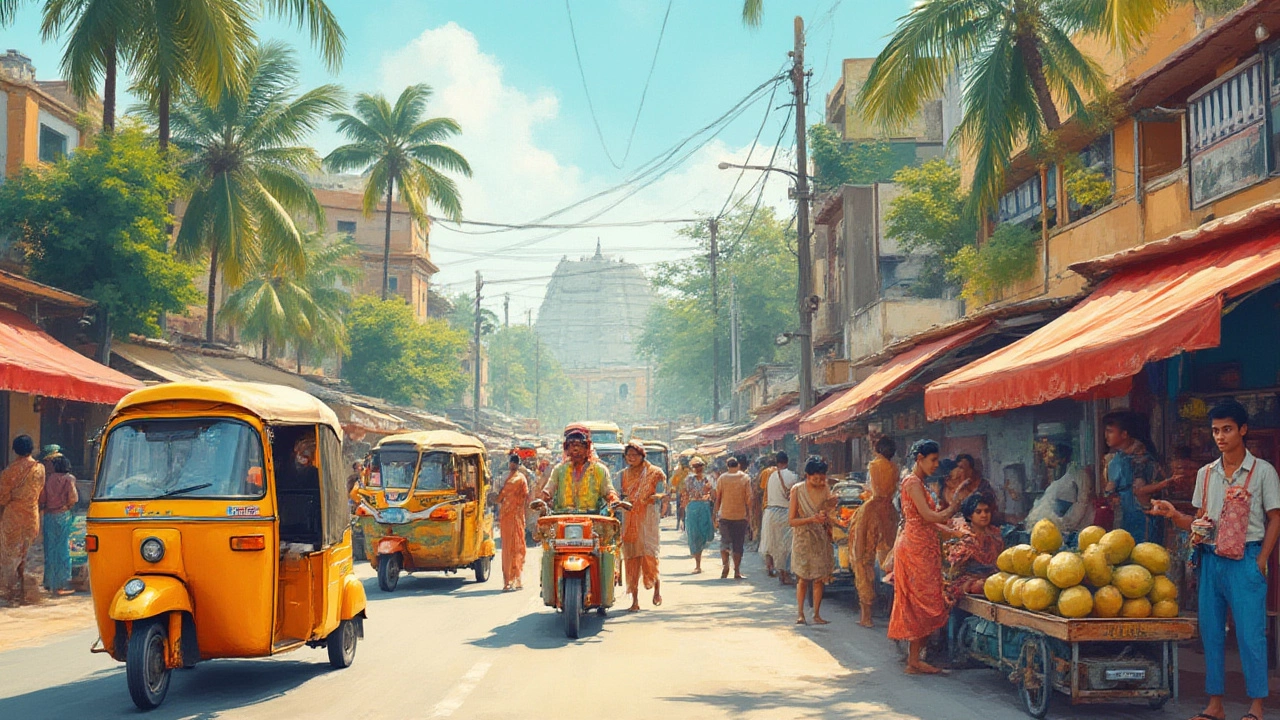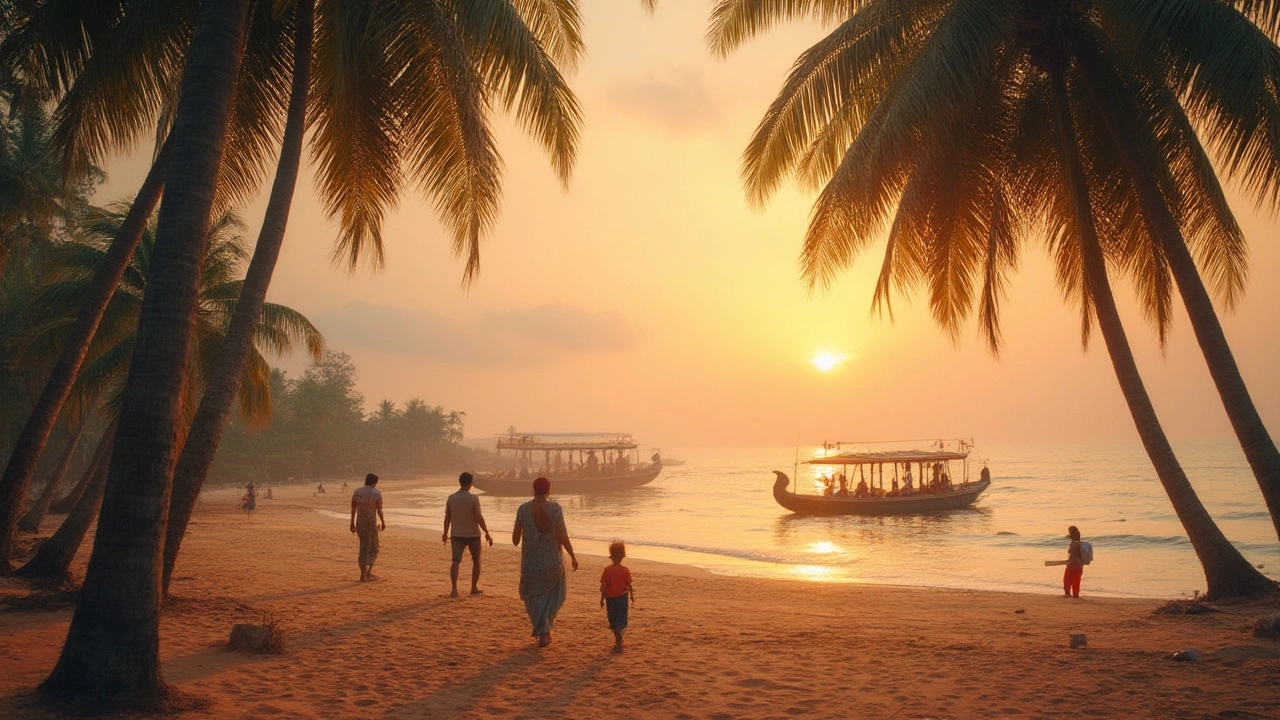Best Ways to Travel in South India: Complete Guide for an Unforgettable Journey
 Jul, 17 2025
Jul, 17 2025
You’ll never understand the heart of India until you’ve felt the humid night air in Kerala, dodged buses with your tuk-tuk in Chennai traffic, or watched the sunrise over the Hampi ruins through a tangle of monkey-filled palm trees. South India is a different beast — wild in parts, achingly tranquil in others, but always packed with jaw-dropping experiences. So the big question isn’t just what to see, but what is the best way to travel in South India so you get the untamed energy, the food, the temples, the beaches, and somehow still keep your sanity (and budget) together?
Understanding South India’s Landscape: What Makes Travel Here So Unique?
South India isn’t just a single mood. It’s a riot of cultures, terrains, and languages. You can go from sipping filter coffee in a Bangalore café to watching elephants get bathed in a Kerala river — all in a day’s travel, if you hustle. There’s Tamil Nadu’s temple cities, Karnataka’s lush rainforests, Andhra Pradesh’s bustling pilgrimage routes, and of course, Goa’s legendary beaches. Throw in the Western Ghats mountain range and the palm-fringed Malabar Coast, and you’re signing up for major travel variety. People sometimes underestimate the size. If you put your finger on Hyderabad and drag it to Kanyakumari, you’re looking at more than 1,100 kilometers.
This region burns hot and humid most of the year, except in the highland hill stations like Munnar or Ooty, where you’ll need a jacket at night. Roads wind through jungles, beach shacks appear out of nowhere, and train tracks crawl over ancient bridges. Did you know that the Konkan Railway snakes along 2,000 bridges and 92 tunnels, carving through Goa and Karnataka? Maps barely hint at how much geography you’ll actually cover.
The languages switch up too: Telugu, Tamil, Kannada, Malayalam, and even some English in pockets. Each state carries its own food traditions, festivals, and quirky laws (just try ordering a beer on a Kerala dry day). Don’t expect a single "South Indian" experience — the diversity is dizzying, and this shapes everything about getting around.
By Road: The Art of Bus Rides, Self-Drive, and Car Hires
Road trips in South India are a rollercoaster. On one hand, you get complete freedom: no train schedules, no airport security. Do you want to pull over for vada and coconut chutney at a random roadside café? Go for it. The state highways tend to be well-paved, especially the big ones like the East Coast Road from Chennai down to Pondicherry and Cuddalore, or the Bangalore-Mysore highway. But rural detours? Get ready for potholes, herds of cows, and some creative overtaking by local drivers.
If you’re the adventurous type, renting a car or riding a scooter gives you full control. International drivers’ licenses are generally accepted by reputable rental agencies in big South Indian cities. Some bold souls drive the entire circuit themselves, but don’t underestimate local driving culture. Honking is a language. Speed limits are suggestions. If it’s your first time, it might be less stressful to hire a car with a driver (the price difference isn’t as steep as you'd think, especially split between 2-3 people). You also get a local storyteller — these drivers have epic stories about pilgrimage festivals, Bollywood shoots, and temple histories. Pro tip: Always haggle a bit for long-term car hires and make sure fuel is included or clarified.
For everyone else, the bus system here is massive. State-run buses connect even tiny villages. The experience can swing from basic (think wooden seats and endless stops) to fancy, air-conditioned Volvos with Netflix on your phone. If you want to get from Kochi to Munnar, or Chennai to Pondicherry, buses run daily, cheap and efficient. Here’s a story: on a Tamil Nadu overnight bus, I met a guy who was traveling for a temple fest, carrying a live chicken as his offering. That’s just a Tuesday down south. Make sure you use official sites — Redbus.in is a top option for online bookings with seat selections. Don’t expect perfect punctuality, but the buses have improved tons in comfort the last few years.

Trains and Sleeper Experiences: Why Rail Travel Is Legendary
Ask anyone who’s rambled through South India: the train is more than just transport. It’s an experience in itself. Rail lines here wind past rice paddies, cross coconut groves, and crawl over mountain cliffs, especially on routes like the Nilgiri Mountain Railway to Ooty — a UNESCO World Heritage Toy Train with hair-raising curves. Indian Railways is massive. Try the overnight Chennai–Trivandrum Express and listen to the lullaby of clanking rails, with the spicy aroma of dosa floating from the pantry car.
Booking a train, though, can be an adventure. You’ll want to book through IRCTC’s website or app (or Cleartrip if you prefer English interfaces). Sleeper class is the true Indian way — open windows, people offering you chai and samosas, a full slice of social life. For more comfort, opt for AC second or third tier, with private bunks and clean sheets. Here’s a stat: South Indian trains routinely cover distances up to 900 kilometers in a single overnight trip at bargain prices. You don’t have to be a backpacker to love it. Families, honeymooners, and even business folks use trains because they’re affordable and memorable.
Timetables are pretty reliable; delays happen but not always. Try to arrive early — some stations are huge (Chennai Central and Hyderabad Deccan, for example, are mini-cities). Luggage can be stowed under the bunk, and trains have charging points for your phone. Be aware: tickets for popular routes (like Bangalore to Goa in high season) sell out fast, so plan ahead. Another tip? Sit next to the window in the early morning — you’ll watch farmers, temple towers, and sometimes entire troops of monkeys fly by. Table below shows estimated travel times and average fares:
| Route | Train Name | Duration | Average Cost (INR) |
|---|---|---|---|
| Bangalore–Goa | Vasco Express | 14 hours | 850 (AC 3 tier) |
| Chennai–Kochi | Superfast Express | 13 hours | 920 (AC 3 tier) |
| Hyderabad–Hampi | Hampi Express | 10 hours | 650 (AC 3 tier) |
| Mysore–Ooty | Nilgiri Toy Train | 5 hours | 475 (First Class) |
Don’t forget security with valuables, and always have some snacks. Train stations can be bustling, so keep an eye on departure boards, and don’t stress — Indians are friendly if you need a hand.
The Joys of Slow Travel: Boats, Ferries, and Kerala Houseboats
If you’ve only ever crossed a river by bridge, South India’s boat culture is about to blow your mind. Kerala’s backwaters are the obvious superstar here. Picture this: you’re lounging on a wooden houseboat with palm trees gliding past, kingfishers diving, and a chef preparing fried fish just for you. The Alleppey–Kumarakom stretch is famous for overnight houseboat cruises, and these floating cottages come with every comfort, from plush mattresses to rooftop decks. The experience is pure slow travel. You can book ahead or just turn up at the jetty in Alappuzha, but peak season (Nov–Feb) is packed, so reserve early if you can.
But there’s more. Ferries zip between Kerala coastal towns: hop onto a government boat and pay loose change to cross from Fort Kochi to Vypin Island, watching ancient Chinese fishing nets on the horizon. In Karnataka, ferries connect small towns along the coast, and in the Andaman-like islands of Lakshadweep (part of Kerala), you need a fair bit of paperwork, but the turquoise water makes it worth the hassle. The slowest boat journeys are sometimes the best: take a non-motorized canoe and watch the village life glide by at walking speed, or sign up for a “country boat” ride near Kottayam.
Environmental tip? Look for eco-certified operators — Kerala has several that use solar energy and support local fishermen. If you’re keen for wildlife, early morning on the water is prime time for spotting otters and rare birds. Keep your phone or camera charged, and steer clear of cheap plastic paddles — they snap mid-journey. One thing’s certain: you haven’t really been to South India unless you’ve watched the sun set from a rickety boat, with temple bells tolling in the distance.

Mixing It Up: Crafting the Ultimate South India Itinerary
No single mode fits everyone or every day. The magic comes from mixing things up. Take the train from Bangalore to Mysore for the morning, jump onto a rented bike for the hills of Coorg, then grab a night bus down to Gokarna’s hidden beaches. If you want hyper-local color, use an auto-rickshaw inside cities. Bargain for the fare (“meter se chalo!” always breaks the ice), and you’ll end up with some lively life stories from your driver.
If your trip is short, use local flights to hop between big cities — budget airlines like IndiGo and AirAsia run frequent routes between Chennai, Hyderabad, Kochi, and Bangalore. Flight times are rarely more than 90 minutes, but you’ll spend more time in traffic to and from airports than flying, so plan accordingly. When exploring cities, combine metro trains (Chennai and Hyderabad have excellent new lines) with shared tuk-tuks and app-based taxis (Ola and Uber work reliably). In Goa, rent a scooter for true freedom, and in Kerala, try a heritage walking tour on foot for urban adventure.
Here’s a quick suggested itinerary for 10 days that mashes up road, rail, and river:
- Day 1-2: Chennai — street food and beach walks.
- Day 3-4: Chennai to Pondicherry by car; explore French quarter and seaside cafes.
- Day 5: Overnight train to Madurai; visit Meenakshi Temple.
- Day 6-7: Bus to Munnar; hiking in tea hills and spice gardens.
- Day 8-9: Houseboat in Alleppey; drift on the backwaters.
- Day 10: Short hop to Kochi; forts, art, and boat rides.
Pack light. Get a local SIM card for Google Maps and train bookings. Book train and houseboats early in peak season (December–February). Dip into street eats wherever possible: dosas, idlis, Malabar parotta, and spicy Chettinad curries are game-changers. A reusable water bottle is gold, as is sunscreen — southern sun is no joke. Take the odd risk: hop down from the scheduled tour to get lost in a quiet temple town or sleepy harbor. South India rewards curiosity and an open mind.
Travel here doesn’t follow a script, and there’s no one “best way” for everyone. The real trick is to mix and match — trains for long hauls, boats for the backwaters, buses and autos when you’re feeling brave, and the occasional taxi splurge when exhaustion hits. You’ll leave with stories that sound impossible, a phone full of sunrise photos, and probably a craving for fresh coconut water that’ll haunt you back home. South India gets under your skin, and the journey’s half the adventure.